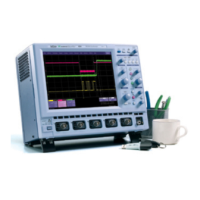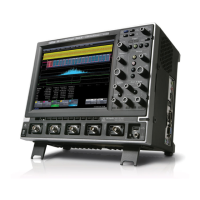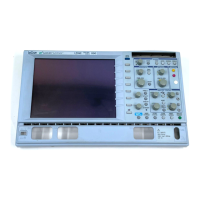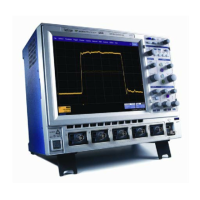X-Stream Operator’s Manual
WM-OM-E Rev I 371
• Is the byte position of the error known?
• Is a reference signal easily available?
• Is the error repetitive or intermittent?
Recommendations on the appropriateness of each analysis method are provided below.
Analog Compare
Analog Compare is the most general of the channel analysis methods, since it can be applied to all
parts of the head signal, including VCO Synch, servo burst and data field. It is recommended for
identifying the location of errors for peak detect signals. It can also be used for PRML signals,
although Channel Emulation with a reference signal is the recommended method if a reference
signal is available. See Using Analog Compare for a full description of this method.
Channel Emulation without Reference
Since it does not require a reference, Channel Emulation without a reference signal is the easiest of
the channel analysis methods to use for PRML signals. This method performs channel emulation to
determine the locations in the head signal that gave the Viterbi detector the most trouble in its
decision as to the maximum likelihood sequence of samples. This means the state at a particular
time, in the final surviving sequence, survived by the smallest margin. (The "state" corresponds to
deciding on a "1" or "0" bit at each position.) The margin between keeping and rejecting what turned
out to be the final choice for the state at that time is called the Sequenced Amplitude Margin (SAM).
Unlike the compare methods, Channel Emulation without reference is based only on analyzing the
quality of the head signal. It is generally assumed that the quality of the head signal is strongly
correlated to the bit error or errors in nonreturn to zero (NRZ) data. Head signal sections that
produce incorrect NRZ data are much more likely to be marginal when analyzed by the Viterbi
detector. The most marginal sections are the first flagged by Channel Emulation as having the
worst SAM. See Channel Emulation Without Reference for a full description of this method.
Sections with no signal transitions are one exception to this rule. These may not be identified as
problematic by the Viterbi detector. However, if the Limit Run Length feature is enabled, sections
with no transitions will be identified as errors if they exceed the run length limit.
Because it is the easiest of all methods, Channel Emulation without reference is generally the best
to use first.
Channel Emulation with Reference
Channel Emulation with a reference is very useful if the error being looked for occurs at least fairly
frequently and a reference head signal is available. If the error is not "hard," that is, it does not occur
all the time, any acquisition may be stored as the reference; Channel Emulation with reference will
catch acquisitions for which the DDA’s channel emulation detects a different bit sequence. If the
error is hard, a separate reference must be available. To have no errors detected, the reference
must have the same bit pattern as the acquisitions with which it will be compared. This means each
sector of the reference must be either unsplit or split in the exact same place as the matching
sectors in the acquisitions with which it will be compared.
Channel Emulation without reference must assume that the final surviving sequence of bits is
correct and only points out poor quality in the head signal. But Channel Emulation with reference
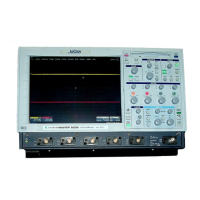
